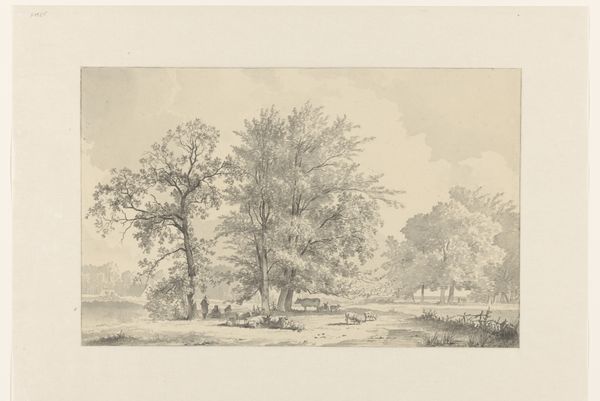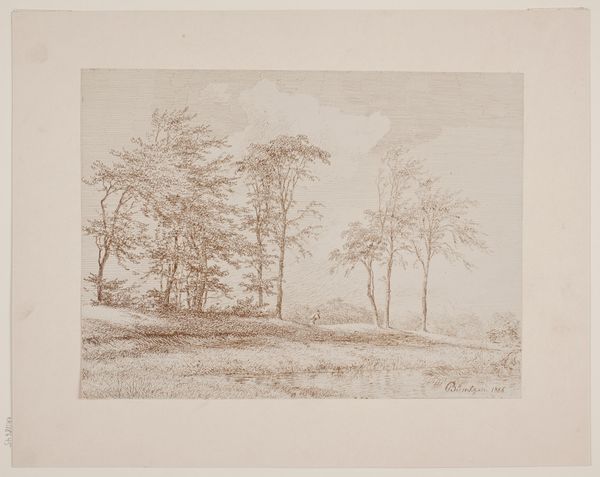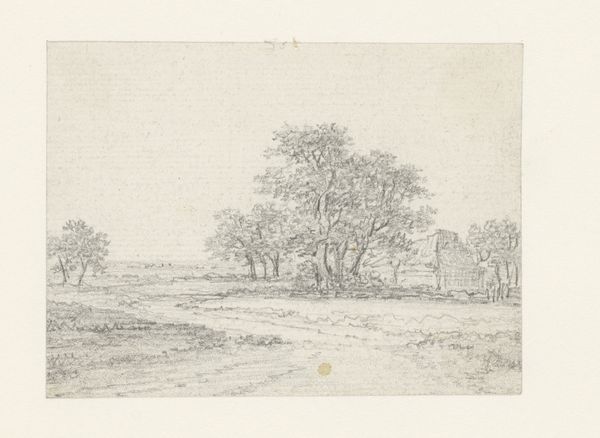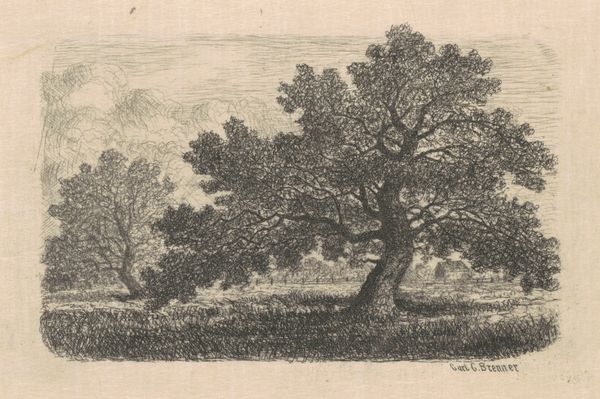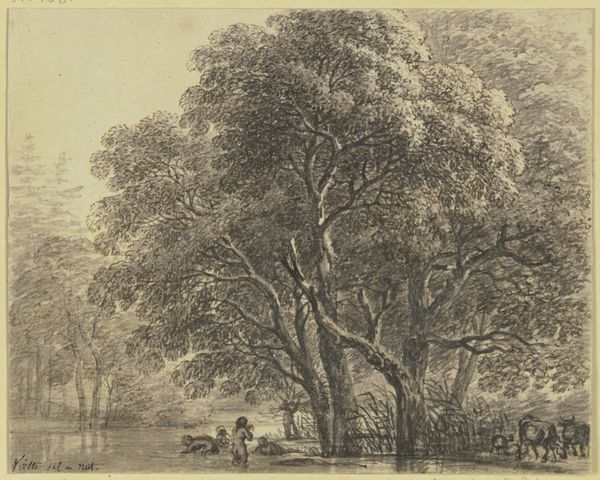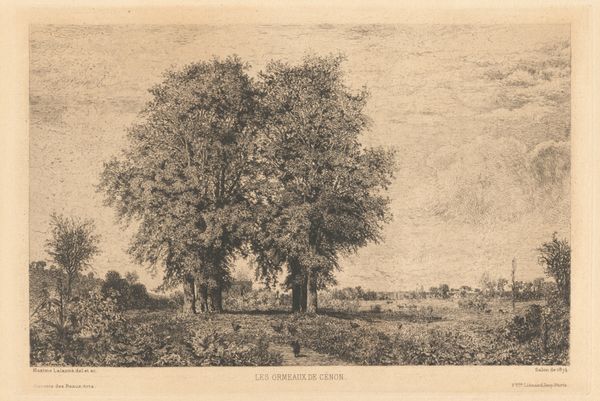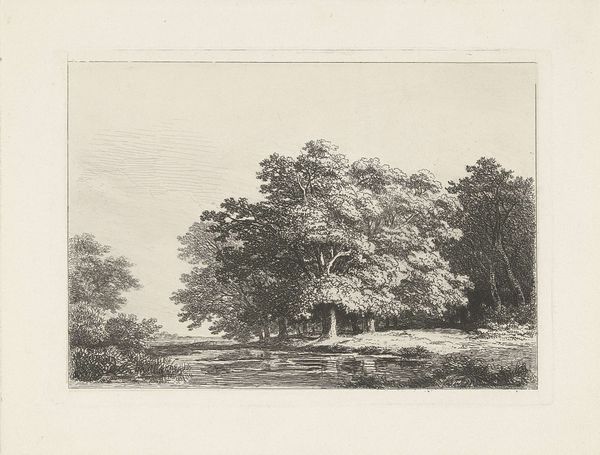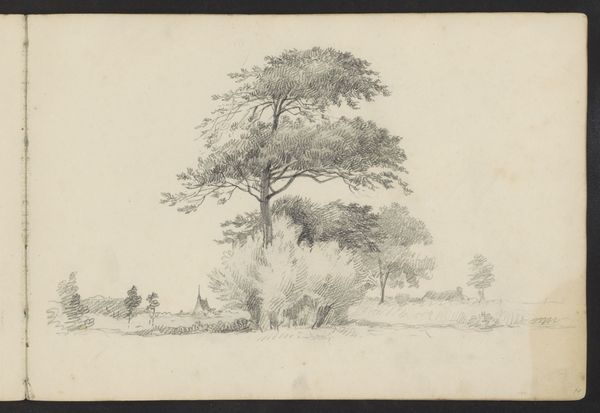
"Studier efter Naturen med Hensyn til Landskabstegning af S.H. Petersen", nr. 8 1816
0:00
0:00
print, engraving
# print
#
landscape
#
romanticism
#
engraving
Dimensions: 328 mm (height) x 420 mm (width) (plademaal)
Editor: So, this is "Studier efter Naturen med Hensyn til Landskabstegning af S.H. Petersen", nr. 8, a landscape engraving by Søren Henrik Petersen from 1816. It gives off such a tranquil, almost melancholy mood to me. What do you see in this piece? Curator: I see a carefully constructed representation of nature that's deeply rooted in the Romantic era's changing relationship with the land. Notice the detail—the deliberate rendering of individual trees and their placement within the scene. Can you imagine what it meant to depict a ‘natural’ landscape as countries throughout Europe were undergoing intense industrialization and urbanization? Editor: It’s almost as if the artist were trying to capture a disappearing world, a world untouched by progress. Curator: Precisely! The emphasis on nature wasn't simply aesthetic; it became a site for reflecting on national identity, cultural memory, and, frankly, anxieties about rapid societal transformation. What do you notice about the light? How is it used to create atmosphere? Editor: There’s a very subtle gradience in the shading. That heightens the sense of depth and perhaps even the stillness, creating a nostalgic filter almost. Was this tied to political sentiments in any way? Curator: Absolutely. Romanticism in art often intertwined with nationalist movements. The landscapes were a source of cultural pride. And within these idealized natural settings, there were coded messages about who belonged, who had a right to that land. The print also reproduces, makes available at a distance what many could not afford, access, or experience. Editor: So the piece becomes part of a much larger conversation around ownership, national identity, and societal change. I didn’t expect a landscape to be so loaded. Curator: These artworks become vital touchstones for interrogating broader power dynamics in early 19th century Europe. I am constantly finding that these objects tell so many tales of past inequalities, inviting us to question, “How far have we come since?" Editor: This has definitely changed how I will approach landscapes moving forward. Curator: Mine too!
Comments
No comments
Be the first to comment and join the conversation on the ultimate creative platform.

